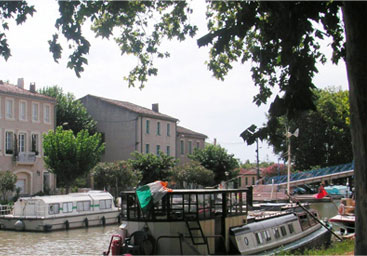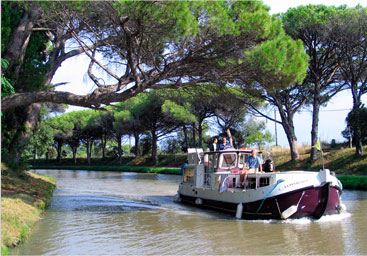|
|
|
|
Canal du Midi
235 km of 17th-Century Engineering & 100+ Locks
Construction of the Canal du Midi commenced in 1666. 12,000 men toiled crossing rivers and tunnelling through hills. It is irrigated from the mysterious Montagne Noir and runs 235 kilometres and requires over 100 locks. The Canal lies West of Béziers and connects Sète on the Mediterranean with Toulouse and the Atlantic via the Garonne river. The Canal runs through a series of lovely old villages with a few surprises along the way. |
|
 |
|
|
|
|
|
 |
|
Agde
11th-Century Volcanic Cathedral & Winding Streets
Agde is the second oldest city in France known as the Black Pearl of the Mediterranean. Situated on the banks of the river Herault the 11th Century cathedral, which is constructed from volcanic rock dominates the town. Agde's old winding streets host an array of bars, restaurants, markets and fabulous walks along the Canal du Midi. |
|
|
|
|
|
Colombiers
Historic Tunnel & 1869 Church Renovation
The village of Colombiers is located between the canal tunnel of Malpas and Béziers. It has a marina allowing canal travellers to stop for a restaurant meal and other town facilities. Colombiers has a lovely big church renovated in 1869 and an ancient vaulted wine cellar that is also worth seeing.
|
|
|
|
|
Homps
Beaches, Water Sports & Canal-Side Cafés
Homps is a picturesque French village set on the Canal du Midi and adjacent to the Lac du Jouarres with beaches for swimming and water sports.
The Mediterranean beaches around Narbonne and the mountains are a short drive away. The region is renowned for fresh fruit, wine and olives as well as the beautiful scenery. The Canal Du Midi is a World Heritage Site.
The village of Homps became established as the port for the nearby town of Olonzac after the completion of the Canal du Midi 350 years ago. The cargo barges have now been replaced by pleasure boats and the canal side bars and restaurants provide an ideal place to relax and watch the world go by.
|
|
|
|
|
Marsiellan
Foodie Paradise by the Lagoon
If you have a passion for food and wine Marseillan is a foodie paradise - a village surrounded by vines and lapped by the waters of a lagoon brimming with oysters and sea bass, with a weekly market offering delicious fruits, olives and the aromatic herbs of the south of France and two dozen mouthwatering restaurants.
|
|
|
|
|
Sete
Mont Saint-Clair Views & Canal-Side Heritage
The modern Sète was built in the middle of the 17th century by Paul Riquet, architect of the canal so that the Canal du Midi would have a port on the Mediterranean. Preceded by the Romans 17 centuries earlier the town was named Mons Setius, and pirates were ensconced on Mont Saint-Clair in the 16th century. But it was Riquet's new Port-Saint-Louis-du-Cap-de-Cette that became the seaside and canal town of today.
Interesting links
http://www.beyond.fr/sites/canalmidi.html
|
|
|
|
|